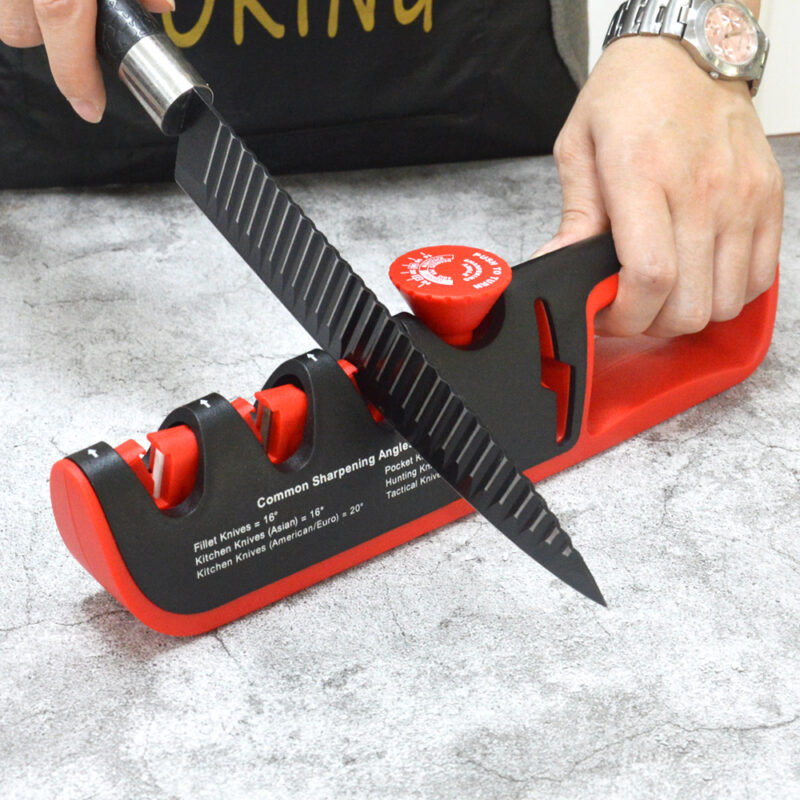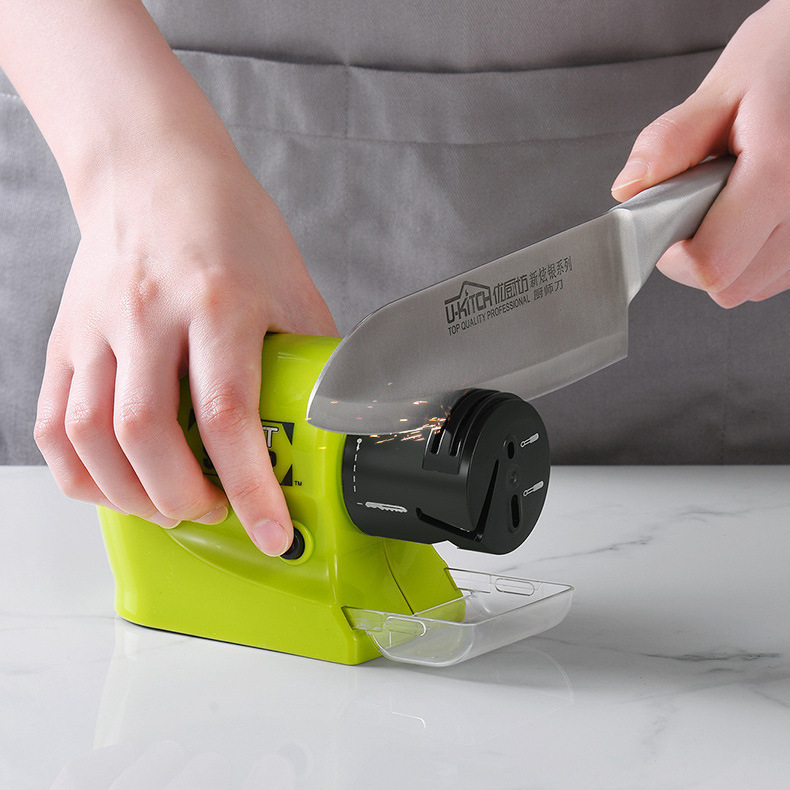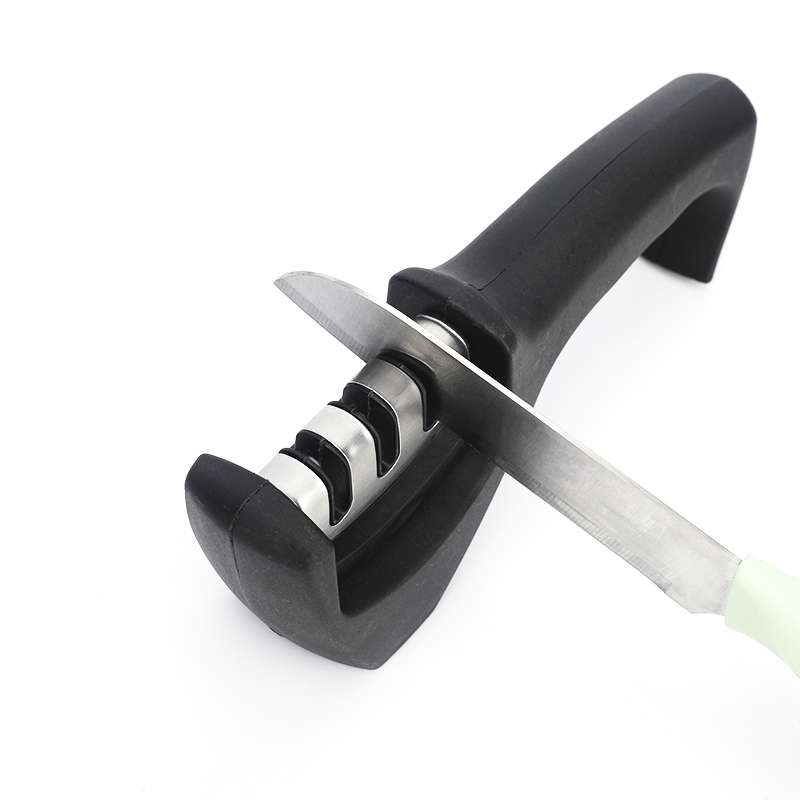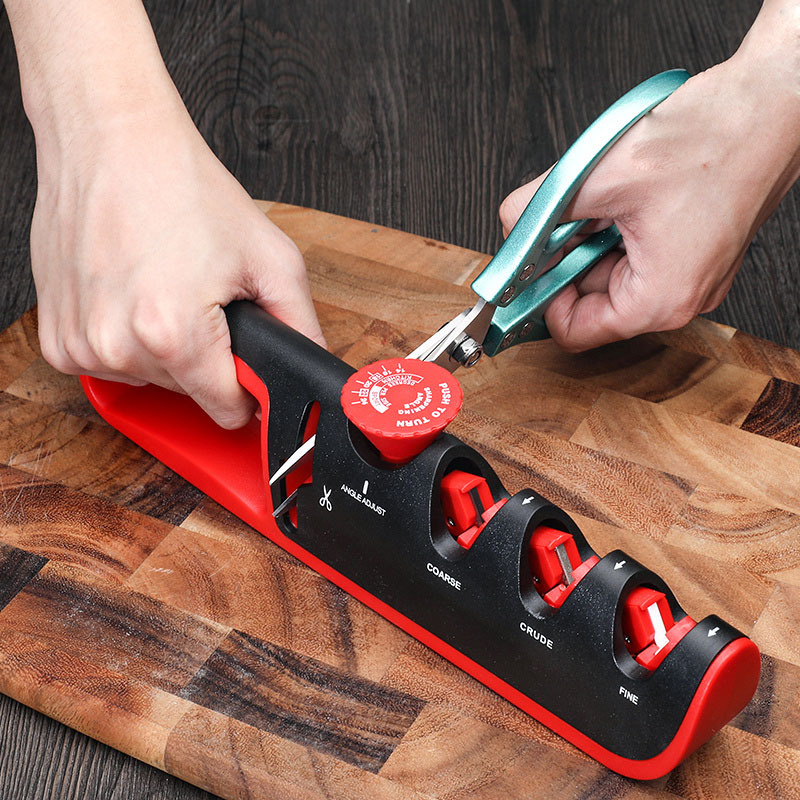Introduction
Sharp knives are essential tools in any kitchen. They make food preparation easier, faster, and safer. However, over time, even the best knives will become dull and lose their edge. When this happens, it’s important to know how to sharpen them properly. In this essay, we will explore the best ways to sharpen kitchen knives, including the tools you will need, the techniques to use, and some tips for maintaining your knives.

Tools for Sharpening Kitchen Knives
Before you begin sharpening your kitchen knives, you will need to gather some tools. Here are the most common tools used for sharpening knives:
- Sharpening Stone: A sharpening stone is a rectangular block of a***sive material that is used to sharpen the edge of a knife. There are many different types of sharpening stones, including oil stones, water stones, and diamond stones.
- Honing Steel: A honing steel is a long, thin rod made of steel or ceramic that is used to straighten the edge of a knife. It does not actually sharpen the knife, but rather helps to maintain the edge between sharpenings.
- Electric Sharpener: An electric sharpener is a machine that uses a***sive wheels or belts to sharpen knives. Electric sharpeners are fast and easy to use, but they can be expensive and may not produce the same quality edge as a sharpening stone.
Techniques for Sharpening Kitchen Knives
Once you have your tools, it’s time to start sharpening your kitchen knives. Here are the most common techniques for sharpening knives:
- Using a Sharpening Stone: To use a sharpening stone, start by wetting the stone with water or oil, depending on the type of stone you are using. Then, hold the knife at a 20-degree angle to the stone and draw the blade across the stone, starting at the heel and moving towards the tip. Repeat this process on the other side of the blade until the edge is sharp.
- Using a Honing Steel: To use a honing steel, hold the steel vertically in your non-dominant hand and hold the knife at a 20-degree angle in your dominant hand. Starting at the base of the blade, draw the knife down the steel, pulling the blade towards you in a sweeping motion. Repeat this process on the other side of the blade until the edge is straight.
- Using an Electric Sharpener: To use an electric sharpener, simply insert the knife into the appropriate slot and turn on the machine. The machine will guide the knife through the sharpening process, using wheels or belts to sharpen the edge.

Tips for Maintaining Kitchen Knives
In addition to sharpening your kitchen knives, it’s important to take good care of them to ensure that they stay sharp for longer. Here are some tips for maintaining your kitchen knives:
- Store Knives Properly: When not in use, knives should be stored in a knife block, a knife magnet, or a sheath to protect the blade and prevent it from becoming dull.
- Clean Knives Carefully: Knives should be washed by hand with warm, soapy water and dried immediately to prevent rust and corrosion.
- Use Knives for Their Intended Purpose: Knives are designed for specific tasks, and using them for other tasks can cause damage to the blade and dull the edge.
- Sharpen Knives Regularly: To keep your knives sharp, they should be sharpened regularly, depending on how often they are used.

Conclusion
In conclusion, sharpening kitchen knives is an important skill for anyone who loves to cook. By using the right tools and techniques, you can keep your knives sharp and in good condition for years to come. Remember to store your knives properly, clean them carefully, use them for their intended purpose, and sharpen them regularly to maintain their edge. With these tips in mind, you can enjoy the benefits of sharp knives in your kitchen.

